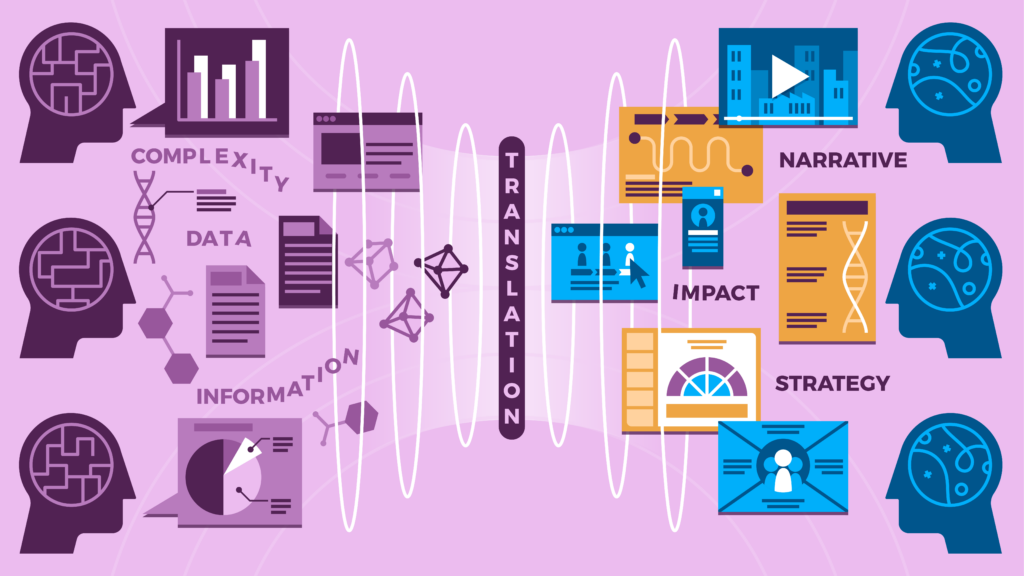A Rosetta Stone for visual storytelling
One thing that every project here at Tremendousness has in common is the translation of complex information into compelling visual formats. This is what we do to help our clients tell the stories they’re trying to communicate.
That word “translation” is a specific choice. Our clients are the experts at what they do and the people and strategies required to succeed. What they need help with is the TRANSLATION of that strategy into story. We help them take all the complex details that they need to do their work and transform those into a story that makes it easier to not just understand in the moment, but to retain, return to, and share.
There is a specific tool we use in that process of translation.
When we emerge from a discovery workshop early in the process, our first goal is to synthesize the findings into cohesive blocks of information so our designers can focus the visualization of the story around what matters. There are a number of types of stories we frequently tell. Sometimes it’s a ‘Strategy Story’, ‘Value proposition Story’, or it could be ‘Change Story’, amongst a range of others. Regardless of the story type, to get to that cohesive structure, we use something we call a NARRATIVE. Think of it as our Rosetta Stone.
There are four key pieces of the narrative:
- The premise: This varies depending on the need of the project. For strategy visuals this might be about ‘Who We Are’—the client’s functions and teams. For a change management visual this is where we articulate the ‘Case for Change’ or ‘Vision for the Future’.
- The unique approach: This content often is about the core capabilities of the team, or the specific activities and paths to get to the future.
- The benefit: This part explains the impact the business has on key customers (both internal and external), end-users, and the organization as a whole—or the value proposition of the initiative, and why it matters.
- The takeaway: Here’s what we want the audience to walk away with; it could be an explicit call to action, general awareness, or even a mutual understanding of success.
Using those ingredients, we write a one-page document that maps out the critical perspectives and pieces of information that tell the story. We then share that with our client, collaborate to refine it, and, once aligned, use it to guide the creation of the visual artifacts that become the final output.
The rationale is that it’s more productive to organize the raw output from the sessions and use that as a starting point, rather than immediately diving into specific visual concepts. It helps everyone align on the information first, before we begin visualizing it. This makes the design and feedback process more efficient for our designers… and gives our clients the confidence that they’re going to get exactly what they need to tell their story.
Image: Illustration by Hannah Fales / Tremendousness.
